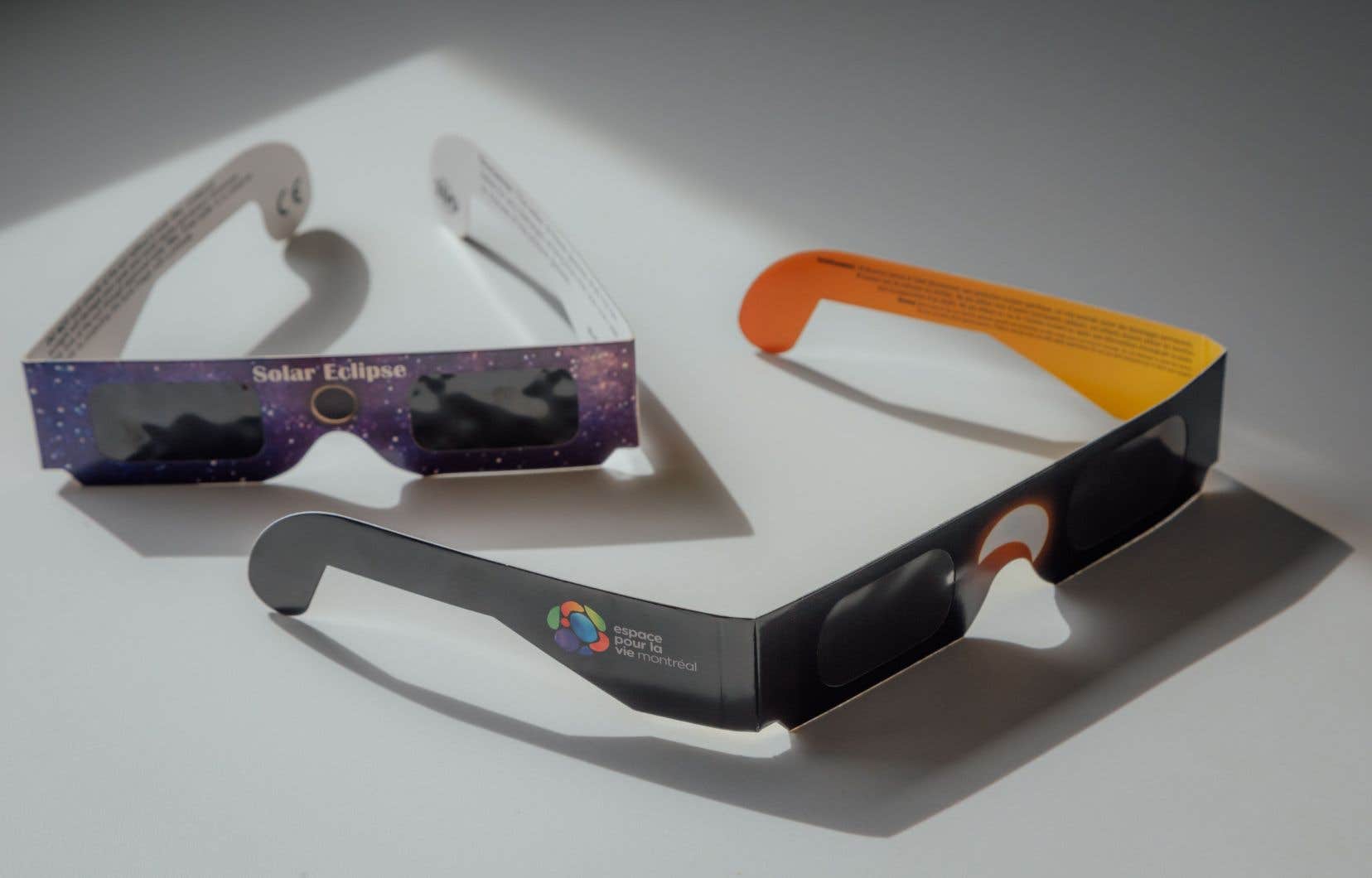The Federation of Amateur Astronomers of Quebec (FAAQ) is concerned about the safety of certain eclipse glasses sold in Quebec, notably in certain Canadian Tire stores and at the Maison de l’astronomie. Optometrist specializing in eye safety, the Dr Ralph Chou of the University of Waterloo confirms that some of them have probably not been certified to ISO 12312-2.
It is this standard that is recommended for protecting the eyes against potential damage caused by the sun during an eclipse.
“The labeling does not at all respect the requirements of a certified device,” confided the Dr Chou in interview with The dutyafter examining the photos of a model of glasses purchased at Canadian Tire which were sent to him by the FAAQ. The duty purchased similar glasses from a franchise on the South Shore of Montreal.
Several elements are missing: the name of the manufacturer, its address, the instructions for use, the statement that use by children must be supervised. All we know about the manufacturer is that it is located in China.
“As the Chinese manufacturer is not identified, there is no way to contact it and check if tests have been done to ensure that the product meets safety standards,” explains the optometrist.
The logo and name of the ISO standard have been printed on the inside of the glasses, but, unlike models from verified sources, it is not directly stated that the glasses comply with it. Furthermore, the glasses purchased by The duty indicate that they are “NASA approved”, although NASA does not approve specific brands of glasses.
The Canadian Tire company, for its part, assured by email that the two models sold in its stores “are certified to comply with ISO standards”. “Customer safety is a priority for Canadian Tire,” added Cindy Hoffman, director of communications for the company.
The Maison de l’astronomie, located in Montreal, confirmed that it had already sold the same model of glasses, but that it no longer held it, its stock having recently sold out. Henri-Julien Chartrand, director of product development for the store, is convinced that these glasses are safe since he wore them in daylight and judged that they were sufficiently dark. However, he did not want to reveal the name of his supplier, which would be the same as that of Canadian Tire. He admitted that he did not know the identity of the manufacturer.
However, at this stage, it is not possible to draw conclusions about the safety of the glasses in question. To be sure, precise laboratory tests would have to be carried out, says the Dr Chou, which has not been possible for the moment.
On March 22, the American Astronomical Society (AAS) issued a warning about counterfeit or fake glasses circulating on the market. Some counterfeit glasses appear safe, while others are not.
Precautionary measures
In this context, the FAAQ intends to publish this week a reminder of the precautionary measures to take. “When we are asked where to buy glasses, we refer to the Éclipse Québec website (eclipsequebec.ca), created in collaboration with other organizations precisely to direct people to the right places,” indicates Jasmin Robert, general director of the FAAQ.
Some suppliers and retailers on this list, including Certified Cartridges, were still taking orders at the time of writing. Note that Canadian Tire is not part of it, but that the Maison de l’astronomie is listed there. Furthermore, the AAS has established a list of manufacturers and sellers considered safe.
In 2017, individuals in the United States sued Amazon, alleging they suffered eye injuries after watching a solar eclipse with glasses purchased on its platform.
“If people buy elsewhere, it is at their own risk,” adds Mr. Robert. In this case, the AAS recommends carrying out a three-step test to detect some of the non-compliant glasses. First of all, when wearing them indoors, you should not be able to see anything except “very bright lights, which should appear very dim,” we read in a recent press release.
“If you look at an incandescent light bulb, you should barely see the filament glow,” says Dr.r Cabbage.
“If your glasses pass the indoor test, wear them outside on a sunny day and look around. You should still see nothing except the reflection of the sun on shiny surfaces, which again should be very faint,” the AAS continues.
The final step is to glance at the sun for less than a second. You should see a very well defined round disk, white, bluish, yellow or orange, depending on the type of filter. If the glasses pass these three steps, then they are “probably” safe. But it is not possible to be 100% certain. When in doubt, the AAS recommends that the wearer avoid looking at the sun for more than two or three seconds at a time and more often than every five minutes.
The duty did the test with glasses without a manufacturer’s name purchased at Canadian Tire. The results raised doubts from the first stage. From inside the newspaper offices, you could clearly see the shape of the windows and the silhouette of the buildings outside. “It concerns me that you can see things through the windows,” said Dr.r Cabbage. This suggests that [les lunettes] really aren’t dark enough. »
Furthermore, Mr. Robert reminds us that it is relevant to examine your glasses even if they were purchased from a reliable source, since they could be punctured or scratched. He also mentions that, in the partial eclipse zone, it is necessary to wear the glasses all the time. In the total eclipse zone, glasses can be removed for the short time when the sun will be completely hidden. “They must be returned at the end of totality, as soon as the first rays of sunlight return,” we can read on the Éclipse Québec website.
